
|
|
ENCYCLOPEDIA OF RADIO ELECTRONICS AND ELECTRICAL ENGINEERING Key mixers on microcircuits. Encyclopedia of radio electronics and electrical engineering
Encyclopedia of radio electronics and electrical engineering / Knots of amateur radio equipment. Mixers, frequency converters This time - the circuitry of mixers on electronic keys and several practical circuits. Suppose something like this has already happened, but it is not for nothing that they say: "repetition is the mother of learning." Where do young radio amateurs learn about the principle of operation of the mixer. if old magazines are in the trash, and new literature is only about computers? In the meantime, mixer circuitry is constantly being improved. Developers strive to obtain a mixer with ideal parameters: a large dynamic range. simple, economical, technological, and broadband. Such, perhaps, will be a mixer assembled on ultra-high-speed keys controlled by high-speed CMOS digital microcircuits. Radio amateurs do not lose interest in mixer circuitry. The modern element base allows designing unusual mixers with amazing properties. But first, some theory and terminology. In the amateur radio environment, there is a division of mixers into key and "smooth" - according to the type of local oscillator signal, rectangular or sinusoidal. They also talk about passive and active mixers - passive mixers, unlike active ones, do not amplify the converted signal. According to the principle of operation, in general, all mixers are switches of the phase of the input signal with the frequency of the local oscillator signal. Diodes, transistors or electronic switches are usually used as switching elements. Moreover, active, of course, can only be mixers on transistors. Although not all transistor mixers are active. For example, the mixer that generated a lot of reader interest and discussed in RD #1-97 on page 11 is not active. It is easy to understand the principle of operation of the mixer by considering the circuit of a classic diode ring balanced mixer, Fig.1.
Local oscillator voltage Uget. at the moment when its polarity at point A relative to point B is positive, it opens a pair of diodes VD1 and VD4. In the event of a signal, it passes from the input to the output of the mixer through these diodes. This continues until the local oscillator voltage reverses sign. In this case, the diodes VD1, VD4 close, and the diodes VD2, VD3 open. The same signal passes through these diodes as in the first case, only its phase at the mixer output is reversed - the opposite conclusions of the secondary winding of the transformer T2 begin to work. The local oscillator currents in the symmetrical windings of transformers T1 and T2 are directed in opposite directions at any time and cancel each other out. Of course, without special measures, it is difficult to achieve an acceptable compensation for these currents, and at the output of the mixer a residual signal appears at the frequency of the local oscillator (carrier). To balance the mixer, a variable resistor is included in the break of one of the symmetrical windings of the transformers. But it is difficult to achieve deep carrier suppression in this case either - the spread of technological diode resistances, the asymmetry of transformer windings, mounting capacitances and other factors affect here. Now imagine that we replaced the diodes with electronic keys - switches, in their properties close to ordinary relay contacts, but with much greater speed, Fig. 2.
In this case, the control circuits and the signal path are separated, which greatly reduces their mutual penetration. But this is not all the benefits received. Modern electronic switches (for example MAX361 from MAXIM) have an open resistance of less than 2 ohms and a switching speed of about 100 nanoseconds. In addition, each of the four keys located in the microcircuit case retains its parameters in the range of switching voltage within +/-20 V. This means that the public key does not introduce any non-linear distortions into the signal passing through it. Electronic keys are controlled by signals with digital levels supplied to the outputs "F1" and "F2" in antiphase from the local oscillator signal conditioner microcircuit. The shaper circuit is shown in Fig.3.
The input resistance is determined by the value of the resistors R1, R2, and the amplitude of the local oscillator signal applied to the input is approximately 0,5 V. The attenuation of the through penetration of the control signal into the switched circuits according to the specifications for the 1561 series microcircuits exceeds the value (-130 dB), which allows the mixer to assembled on such keys, without much difficulty to achieve carrier suppression of almost 100 dB! I tested several more mixer circuits that were used as DSB signal conditioners and as mixers - carriers to the operating frequency when working on low-frequency KB bands - from 160 to 40 meters. In the simplest scheme, only one key is used. Figure 4 shows a diagram of this mixer. It is used as a DSB driver.
Any operational amplifier can serve as a microphone amplifier. The original signal is fed to it from an electret condenser microphone. The input of the key is connected directly to the output of the "opamp", and the circuits R1, R2, C1 automatically maintain the balance of the mixer. The resonant properties of the connected electromechanical filter restore the horizontal symmetry of the output signal. The advantage of this circuit is its simplicity, as well as the fact that the control signal is a unipolar signal with a local oscillator frequency. When using a miniature piezoceramic EMF type FEM4-031 -500-3,1V-2, capacitor C2 can be excluded, and resistors Rl and R2 can be selected to match the mixer with the filter input resistance, which in this case will be about 5 kOhm. The next balanced modulator, Fig. 5, works well at frequencies up to 12 MHz, but unlike the previous mixer, this one also requires two-way control.
As a transformer T1, a matching low-frequency transformer from the receiver is used, and for those who are allergic to transformers, we can recommend the circuit Fig.6.
At a LO frequency of 500 kHz, the carrier suppression in this circuit was 94 dB. The same scheme has been successfully used as a second mixer-transmitter to the range, as well as a demodulator or SSB detector, Fig.7.
On the basis of these units, I have assembled and have been operating for several years a small-sized low-frequency compressor, which allowed me to forget what it is to pump the output stages of transmitters. Its simplified scheme is shown in Fig.8.
The idea of this device has been known for a long time, but, judging by the publications, it still resonates with radio amateurs in the form of one or another technical implementation. The principle of operation is to limit the generated SSB signal with its subsequent filtering on an additional EMF. The proposed circuit design of the mixers made it possible to obtain a more linear signal. So, with the degree of limitation of about 15 dB, the correspondents on the air did not notice the appearance of noticeable distortions that usually accompany compression, but noted an increase in the signal level by 1,5 points. The linearity of the path is due to the absence of distortion in the mixers. Due to the comparatively higher level of signals and low currents for the purpose of the circuit, there is no need to shield individual parts of it, and said carrier suppression is achieved with a completely arbitrary installation. The compressor has three outputs, which makes it easy to experiment with it. The first output will be a linear ns compressed signal from a microphone amplifier. On the second - low-frequency compressed signal. And on the third output - SSB compressed signal. The whole device fits in a handheld microphone housing from a portable transceiver. The current consumption from a 12 V source is about 15 mA. At one time I used this "microphone" as a driver for a single-band transmitter-to-receiver with one conversion. I added only the second mixer, Fig. 7, a push-pull driver, the circuit of which is given in RD # 1-97 on page 15, and a power amplifier (RD # 2-97, page 3). It turned out to be a small-sized, but powerful "thing for giving". In the future, it is planned to experiment with switches in mixers of transceiver attachments to more complex receivers, as well as to direct conversion transceivers. Figure 9 shows a diagram of another mixer. I used it as my first mixer for a transmitter with a Quartz 35 filter set and is good in that it does not require a transformer midpoint output.
I want to note once again that the above circuits were tested by me only in the signal conditioning paths of transmitters for low-frequency amateur bands. The use of keys on the upper KB bands is hampered by my lack of information about faster chips. I will be grateful to radio amateurs who provided such information. As for the use of this circuitry in receivers, this is a topic for further experiments. In my opinion, it is quite possible to use such mixers, for example, as SSB detectors. And high-speed keys can be used in the first receiver mixers. I can imagine what dynamic range they will have when they are able to switch a twenty-volt signal without distortion! Author: S.Makarkin, RX3AKT; Publication: N. Bolshakov, rf.atnn.ru
Energy from space for Starship
08.05.2024 New method for creating powerful batteries
08.05.2024 Alcohol content of warm beer
07.05.2024
▪ Molex L1NK Low Voltage Power Connectors ▪ Healthy food passes through the body quickly ▪ Time travel without time paradoxes ▪ Solar panels from lunar soil
▪ section of the site Civil radio communications. Article selection ▪ article Remained from the goat horns and legs. Popular expression ▪ article How Jung Richard Parker repeated the sad fate of his literary namesake? Detailed answer ▪ tarot article. Legends, cultivation, methods of application ▪ article Multiband dipole. Encyclopedia of radio electronics and electrical engineering ▪ article Bashkir proverbs and sayings. Large selection
Home page | Library | Articles | Website map | Site Reviews www.diagram.com.ua |






 Arabic
Arabic Bengali
Bengali Chinese
Chinese English
English French
French German
German Hebrew
Hebrew Hindi
Hindi Italian
Italian Japanese
Japanese Korean
Korean Malay
Malay Polish
Polish Portuguese
Portuguese Spanish
Spanish Turkish
Turkish Ukrainian
Ukrainian Vietnamese
Vietnamese
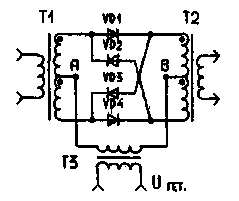
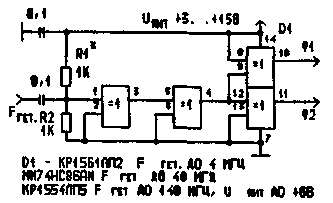
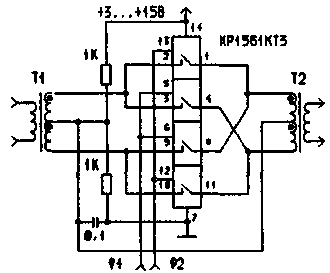
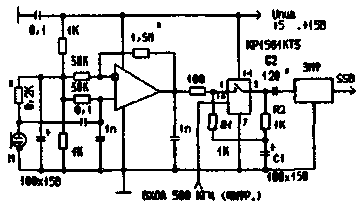
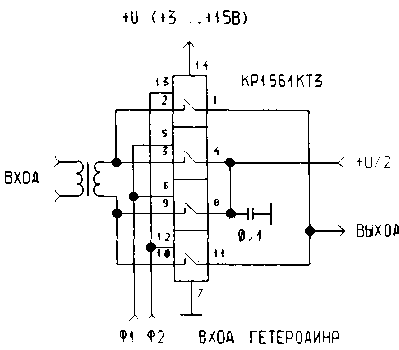
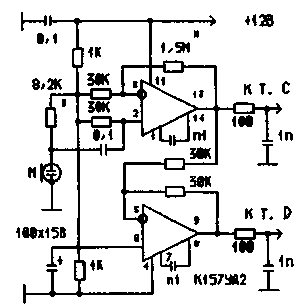
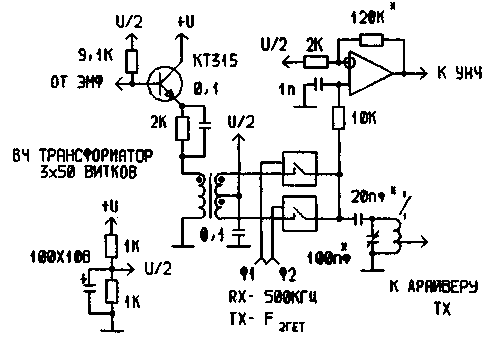


 Leave your comment on this article:
Leave your comment on this article: